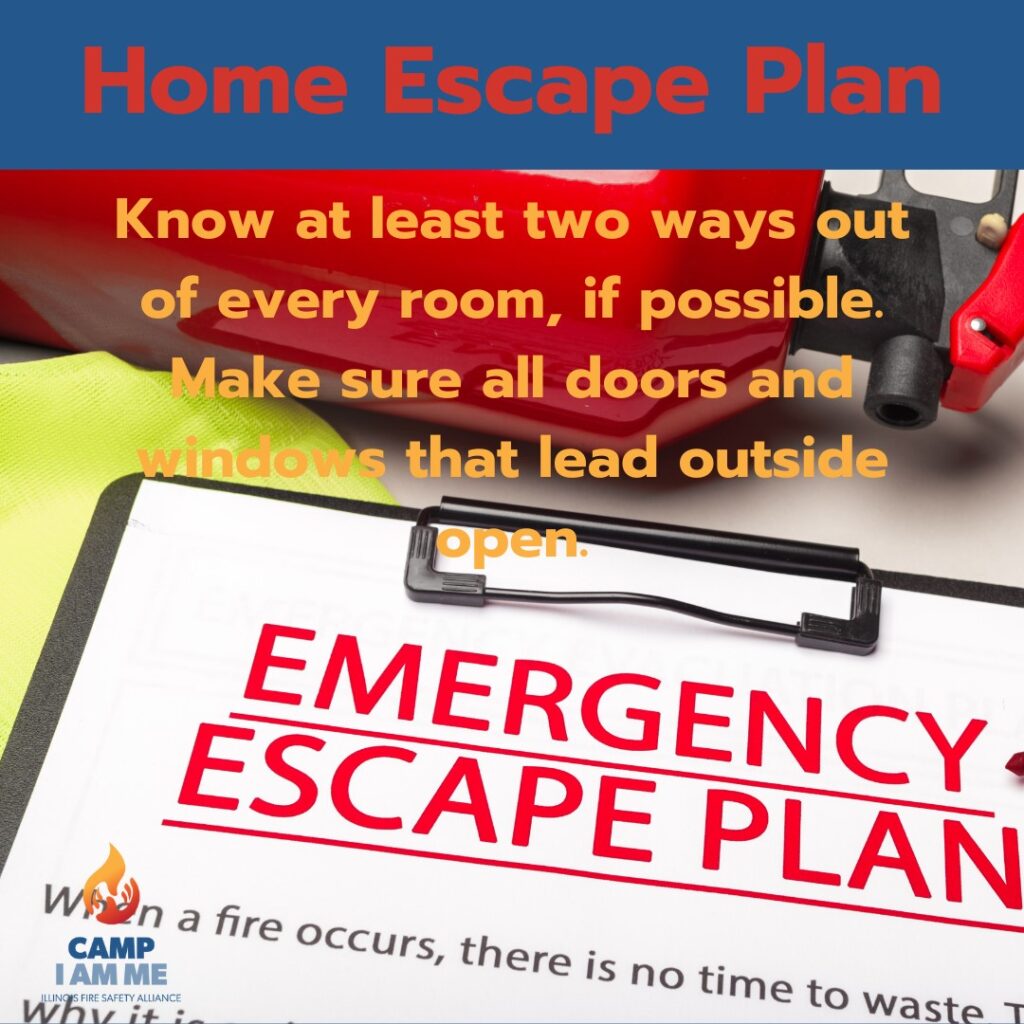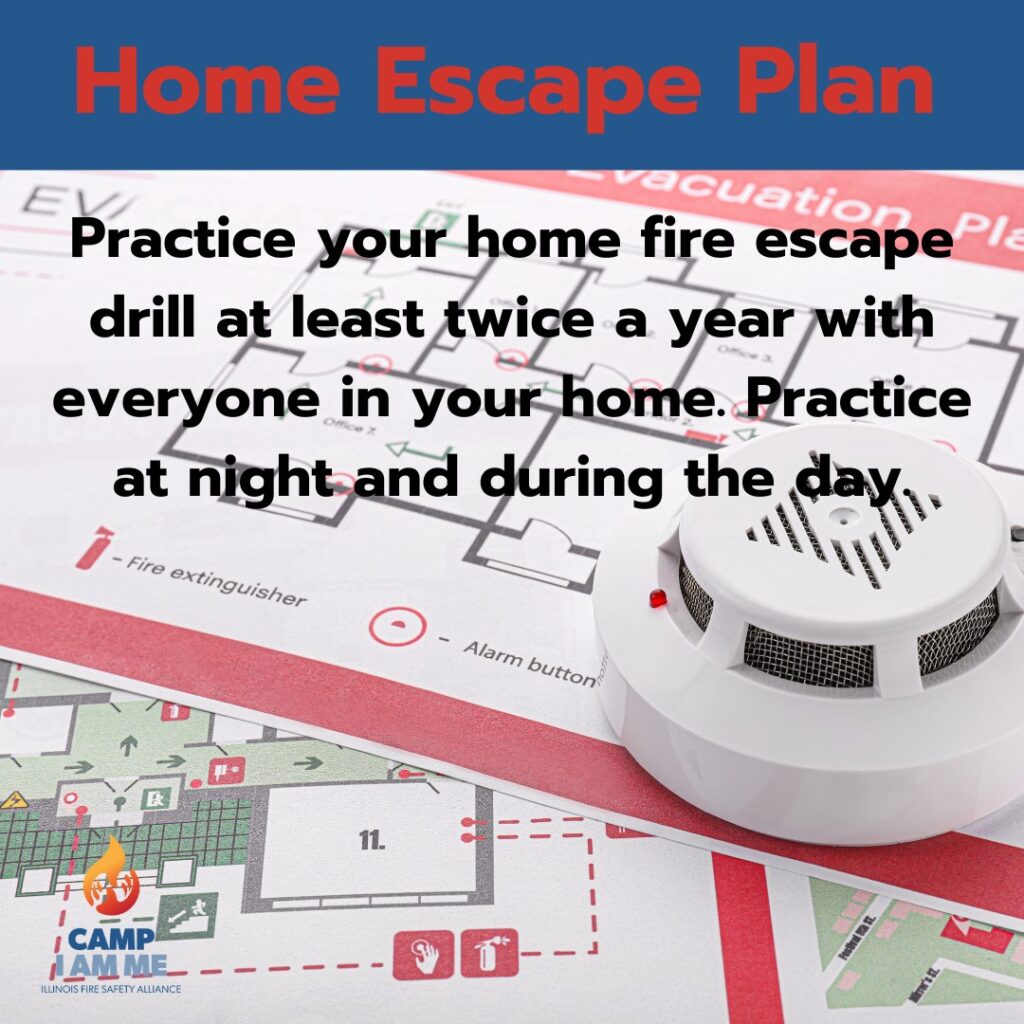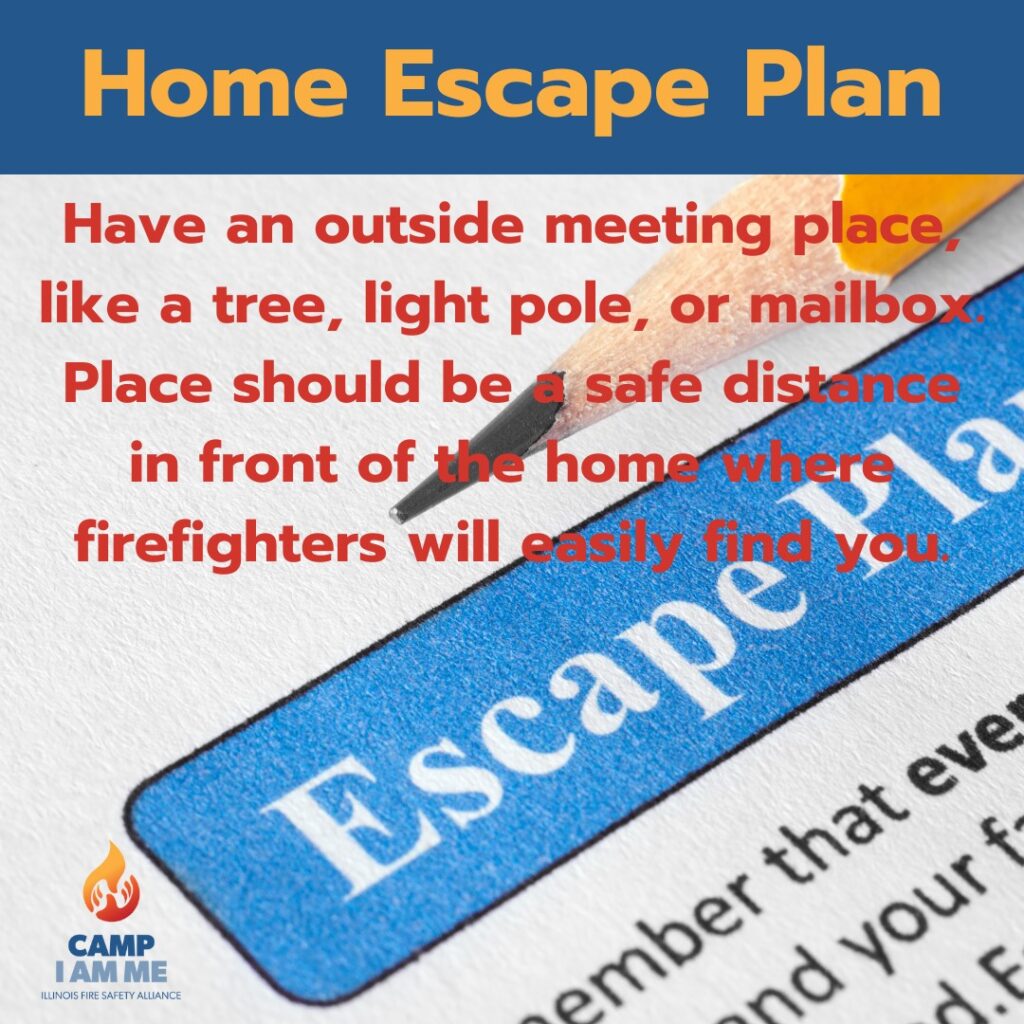Your ability to get out of your home during a fire depends on advanced waring from smoke alarms and advanced planning. Practice your home fire escape plan twice a year, making the drill as realistic as possible. Create a home fire escape plan!
How to use this toolkit
The toolkit contains content that you can share on Facebook, “X”, Instagram, and other social media channels to increase awareness about home fire escape planning. You can copy this content or customize it to reach your audience.
Click on the image you would like to share – “save as” – utilize on social media platforms, website, printed material, or anywhere else you would like.



Additional Tips
Planning
- Install smoke alarms in every sleeping room, outside each sleeping area, and on every level of the home, including the basement. Make sure everyone in your home knows the sound and understands the warning of the smoke alarm and how to respond.
- Draw a map of each level of the home. Show all doors and windows. Go to each room and point to the two ways out. Practice the plan with everyone in your household.
- Children, older adults, and people with disabilities may need assistance to wake up and get out. Make sure that someone will help them.
- Teach your children how to escape on their own in case you cannot help them. Make sure they can open windows, remove screens, and unlock doors.
- Know at least two ways out of every room, if possible. Make sure all doors and windows that lead outside open.
- Make sure everyone in your home knows how to call 9-1-1 or your local emergency number, from a cell phone or a trusted neighbor’s phone.
- Have an outside meeting place (something permanent, like a tree, light pole, or mailbox) a safe distance in front of the home where firefighters will easily find you.
Practicing
- Push the smoke alarm button to start the drill.
- Practice what to do in case there is smoke. Get low and go. Get out fast.
- Practice using different ways out.
- Close doors behind you as you leave.
- Get out and stay out. Never go back inside for people, pets, or things.
- Go to your outside meeting place.
- Practice your home fire escape plan at least twice a year with everyone in your home. Practice at night and during the daytime.
- After you have practiced your home fire escape drill, evaluate it and discuss what worked and what needs to be improved. Improve it and practice again.
